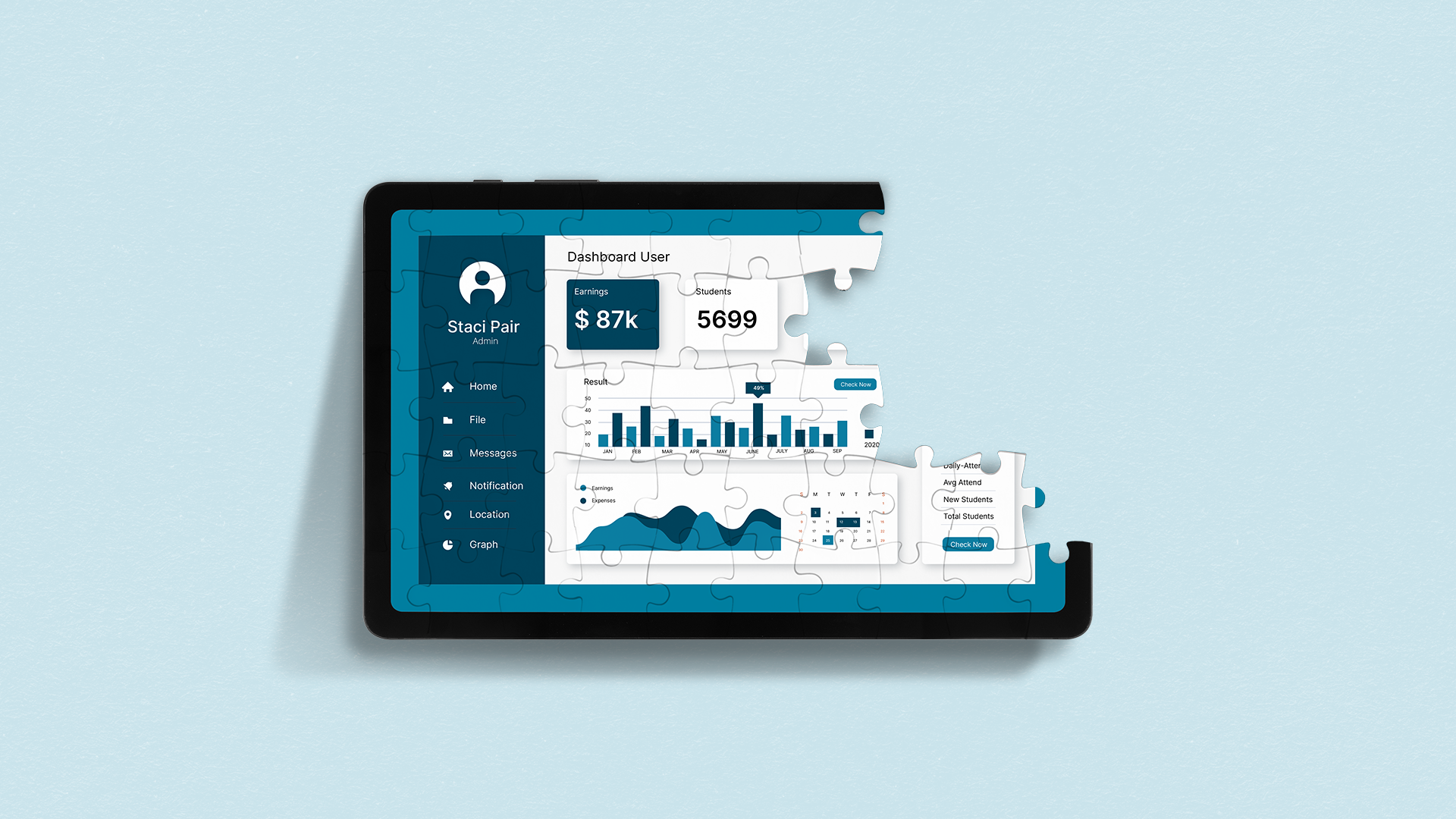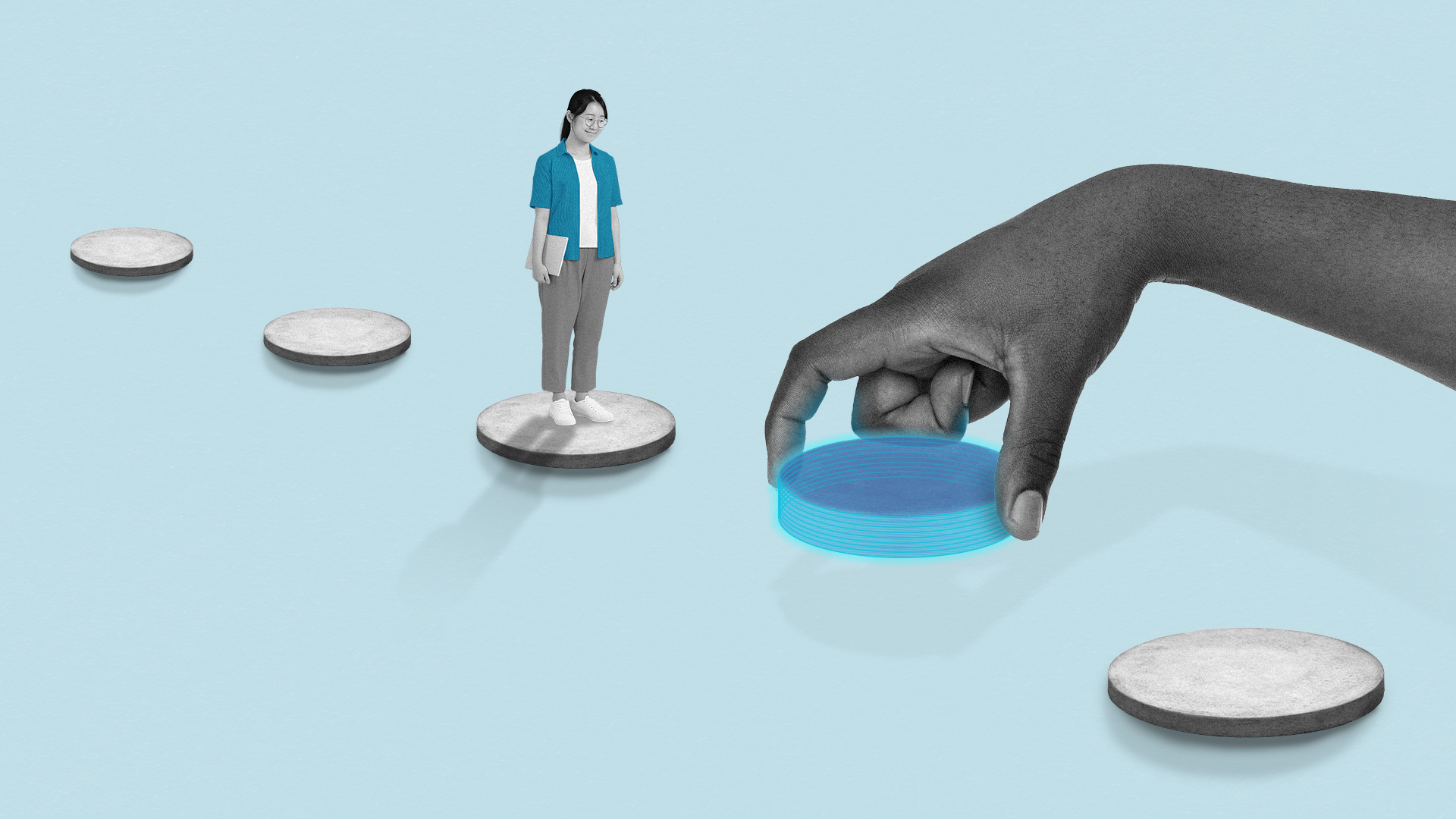Series Title: Learning from Outside of Higher Education to Build an Agile Campus (A four-part series)
A roundtable discussion with Dr. Doug Guthrie, Elliot Felix, and Dr. Scott Bass
Series Overview
The landscape of higher education is undergoing a pivotal transformation, one that demands a fresh perspective on how we approach the student experience. Drawing parallels from places outside of higher education and the evolving needs of students, we’re embarking on a journey to explore how institutions can adopt and adapt these lessons. This series will delve into the innovative strategies of leading retail, healthcare, and other institutions that could enable a more agile campus, and help shape the future role of the campus in an increasingly online world.
Understanding the Situation
What does it mean to embrace agility in today’s academic landscape? Universities are standing at a crossroads, grappling with the task of bringing agility to their campuses. The contemporary academic landscape demands a seamless fusion of online and on-site experiences tailored to an evolving student demographic.
This first article focuses on this complex challenge of universities recognizing their role as key players within their local communities and deeply connected societal realities balanced against a range of internal challenges, such as a mental health crisis and rising costs. To move forward, universities need to acknowledge that many existing approaches are insufficient to meet students’ needs. Change doesn’t end at academic and organizational restructuring. A strong, resonant brand is critical. It’s a beacon that draws in top-tier students, renowned faculty, and competent administrators. Universities, it’s time to step up to the plate. Create an agile campus that meets the needs of students and the wider community – because this is the future of education.
Key takeaways:
Takeaway 1: Students today expect a dramatically different university experience – one that is responsive to their diverse needs, and that effectively leverages the intersection of technology and empathy to meet them where they are as individuals.
Bass
Today’s students are customarily people who grew up in a technological world. When it comes to accessing goods and services they know nothing else than ease and speed which has become a conventional standard. They expect and receive goods and services, from their point of view, rather effortlessly. Their habits have further altered consumerism to be increasingly attentive to the consumer experience. They don’t need to maintain their car because on campus there are available cars, the students input a code and can drive away. This is the same for a bicycle or a scooter. Their ease of getting what they need and want is what they have experienced their whole life.
Felix
It’s widely accepted now to see the pandemic as an accelerant of underlying things that were already happening. I’ll even give myself a little credit for writing a white paper, formally called “The Connected Campus” pre-pandemic. The big idea in that paper was many of the things that have defined Higher Ed are separations, but in the future, those very things are going to be converging and connected. Physical and digital learning, research and instruction, and academia and industry, these historical separations are getting knit together and have been converging for a long time. The pandemic accelerated that convergence.
Guthrie
In today’s world, universities need to think more like corporations, listening to their consumers (students), treating them well and catering to their needs. You want to create an environment in which people feel supported and helped and happy, and have a good time (and it doesn’t mean you need a fraternity row and parties all the time). What it does mean is that people need to be catered to; universities need to be attentive to their needs. And this is a major moment for universities. As we are looking down the road to the future of higher education, we are also facing major disruptions and market pressures with the shift toward online learning and, in many ways, the dilution of the university brand. Universities have to be thinking about how they can best package the knowledge they are trying to deliver.
Takeaway 2: Successful adaptation to meet students’ needs will require that universities acknowledge that many existing approaches are now insufficient and that the broader community needs to be considered at every step along the way.
Bass
For young adults coming into higher education now it is a different culture, one that is well suited for those whose families have encountered higher education themselves … [and] for many decades it worked adequately for privileged white young men. The setting now is quite diverse and can even foster disputes and conflicts on campus. So we’re really in a very different world in terms of how these large organizations work and their strategies with a population for which it’s fairly foreign. Young people talk about feeling like they are impostors in a setting where they don’t belong. For many of these students who feel excluded, their graduation outcomes are alarming in terms of those who can complete the degree in four years. Among all students, just over half complete their undergraduate degree in four years. These individuals do much better after six and eight years, but that’s a long time for a college experience. When we break down graduation rates by gender, women do better than men in the setting. When we break it down further by race, the graduation rate for black men after four years is about 18%. These outcomes have struck a chord among leaders in higher education.
Felix
One example is that two-thirds of “fully online students” enroll within 50 miles of home and two-thirds go to campus at least once. More and more students want greater flexibility. Colleges have been trying to work more with companies – whether it’s on recruitment, real-world projects, internships, executive ed, or continuing ed – to create these multifaceted relationships. Academia and industry have been converging for some time. There are great examples of universities that are out in front of these trends; for example, schools with Co-ops like Northeastern, Cincinnati, or Drexel. They are seeing these changes not just as something that’s going to disrupt their traditions, but more as things that they can see as opportunities, and ways of differentiating themselves.
Guthrie
As noted above, there is the customer experience that is focused on the consumers and the product (students consuming knowledge), and then there is the organization in the community. These are separate issues, but they do intersect at various points. But today, every university has to think of themselves as being a member of the community in which they are embedded. At my university, Arizona State University, I think President Michael Crowe is brilliant at this. He thought about this when he took ASU from being a lower-tier commuter school in the state university system to being at top university in the world, repeatedly labeled as the most innovative school in the world. How did he do that? Let’s look at the example of universities and the communities they serve. Why are the metrics of Higher Ed based on the idea of exclusivity? I reject that, I think we all should. And I think the evidence is clear that, under President Crowe’s leadership, the decision was made that ASU was going to be inclusive. He has built his reputation in the community around the school, primarily in Arizona. But the world comes to us. It doesn’t mean we’re lowering academic standards, but it means we are creating conditions through funding and through specialized learning where we are changing the university’s role in the community. Again, if the product is narrowly defined as what type of scientist or mathematician is being produced, OK, perhaps in those areas it makes sense to think narrowly about exclusive access to knowledge. But at ASU it is about so much more than this; it is also about the role of the university in the community.
Takeaway 3: Making these mindset shifts is not easy, especially given what students have and are facing today – whether it be major global and economic crises, rises in mental health issues, to struggling with the affordability of higher education.
Bass
This digitally enabled generation has been confronted with unprecedented crises. They have lived through school shootings. They’ve lived through a pandemic that isolated many of them despite access to their computers. Many other pressures have triggered concerns for their mental health, including increases in incidents of suicide ideation, which are occurring at an unprecedented rate. When we add up all of the stressors that Generation Z has encountered, besides the warming of the planet and the fires and the floods and the tornadoes and the hurricanes, it’s just shocking. This is a tough time for them. Every generation says it’s been rough but for this generation when you keep adding on stressors, their response has been one that is different from other generations. Leaders in higher education see mixed outcomes on the academic side as well. Suddenly we’ve got other real issues such as the cost of higher education. The levels of debt these students have when they graduate, if they can graduate, are crushing for many. There are lots of innovations and efforts to improve student outcomes that are being tried to better serve these students. In Texas alone, across their campuses, they have chronicled over 200 different strategies to intervene and try to help students be more successful in college. Nonetheless, the broader issue of the structure of the way we do business, and the way we interact with students is a much more difficult and complex issue. That’s what I am focusing on in addition to considering all these other things.
Felix
When you look at annual surveys of college and university Presidents, student mental health is at or near the top in most of their minds. The latest National College Health Assessment identifies about a third of students with an anxiety diagnosis, and about a quarter with a depression diagnosis. In that same survey, only two-thirds of students felt a sense of belonging. I think colleges and universities are acutely aware and are working hard to address mental health problems in multiple ways – more than leaping from “mental health challenges equal more counseling.” Yes, you need more counseling but you also need to think about how to help students intentionally build their support network: through your first-year experience program, first-year seminars, getting involved with a student organization, through their job, in spaces they feel at home it, and with their professors. You also need to think about a more holistic approach to advising and you need to think about how you leverage peer-to-peer support, such as peer mentoring.
Takeaway 4: And higher education institutions need to look inward to figure out whether they have the right organizational structures in place to meet the needs of 21st-century students.
Guthrie
I’ll put on my organizational scholar hat for a moment. When I worked at Apple, we spent a lot of time thinking about whether our organizational culture fit well emphasizing the values of innovation and the best consumer experience. That was one of the core missions of Apple University. And while it is common for corporations to ask the question of whether their organizational structure is producing the right culture, it is less common for universities to think this way. In my own experience, I think a lot of university leaders and administrators don’t think deeply about organizational complexity. Universities are complex corporate forms. They serve diverse communities. If you want to drive this culture down into the organization, you have to think deeply about how to message that culture not just to the community but also to your deans and faculty. You then need to think about how to bring those values to life and how to incentivize people to live those values and culture. I just think universities have been too comfortable for too long. In some ways, this moment of disruption is good because it’s putting a lot of pressure on universities. People are scared. They’re scared of Scott Galloway, who has built an organization, Section School, on delivering the same knowledge at a fraction of the cost. And universities should be scared, because if you’re not delivering on the broader organizational culture and community engagement, what does it mean to pay so much money for a piece of paper with a fancy name on it?
Bass
There are points in history when institutions are no longer able with their current structure to serve their constituents adequately. Look at the history of public mental health institutions and the deinstitutionalization movement. They eventually had to go because they were such horrible places for vulnerable children and adults. Are we at a point where the structure of higher education is no longer adequately serving Generation Z and potential future generations? We know what’s going to happen for at least the next ten years as these college-bound younger students already have academic and mental health challenges. This is a long-term issue and requires real discussion. I’m interested in having a national dialogue about the match between our higher education institutions and the needs of students. That’s a long-term agenda, and it requires rethinking the way we serve.
Felix
A lot of what’s happening needs this multifaceted approach where it’s about people, services, engagement and involvement. I think it’s a challenge. It certainly was one of the things that was accelerated by the pandemic, whether it’s isolation or languishing, any of the things that came with the disruption from the pandemic. Maybe the good part of that is it also brought into much sharper focus the role of the campus. Anyone who thought that the main purpose of their campus was classes has now been disabused of that notion. They’ve come to understand that the main purpose is community, collaboration, and creativity. That’s refreshing because students weren’t clamoring to get back into a large lecture hall. They wanted to get into the residence hall, get into the dance studio, get into the maker space, get into the lab, and get into the library. They wanted to be with each other.
Takeaway 5: But for those institutions willing to do the hard work, the rewards on the other side can be dramatic both for the students as well as the institutions themselves.
Felix
I think Higher Ed institutions can think about their brand as a way for students, faculty, and staff to be part of something bigger, to think about the impact they have on the world. This is certainly the case with research. Universities talk about grand challenges or ways their research is solving real problems for real people. They think about experiential learning projects like real-world projects where students learn skills, grow a network, and explore careers. All these things are intertwined. Students can find belonging through the activities and the groups they get involved in, whether it’s chess, soccer, or student government. They can also find belonging in certain places on campus like an affinity or an identity center for LGBTQ+ students, or student-athletes, student veterans, or a multicultural center. If you think about the real-world projects we were talking about, that’s a way to find a sense of purpose or find a career path. Maybe in that marketing class, you’re taking, instead of doing a social media strategy for a fictitious company, you do one for a local healthcare nonprofit or a startup in the community. Now you’re talking to real people. You’re building relationships. You’re building skills. You’re helping someone. Maybe they need an intern. Maybe they need a full-time hire. Maybe that non-profit’s marketing director becomes a kind of role model. When they talk about how they never use calculus but they use statistics every day, I understand a little bit about their path which can help me shape mine, which can help me design my experience in college. Now I feel like I’m part of something bigger. Because I have this sense of purpose, I want to be a marketing director, or I want to be a data scientist, or whatever it might be.
Guthrie
Some universities are doing it, which means that you can do both: you can do your high-minded work (and ASU has plenty of faculty doing high-minded research and teaching); but, at the same time, you can also think seriously about the customer (students) and an increasingly diverse community in which today’s universities are embedded. Unfortunately, a lot of universities aren’t doing it. They get caught in a narrow focus on narrowly defined niches of specialization. But in today’s world, universities are important institutions in increasingly complex institutional environments. And, again, you can do both. You can deliver on the important ground-breaking research, but you can also think deeply about the university as a key player in the institutional environments in which they are embedded. Let me end with one final ASU example. One of ASU’s academic centers, the Center for Work and Democracy is a fascinating case to me. As a part of the academic enterprise, the Center’s Director, Professor Michael McQuarrie, is of course interested in the research and teaching around this critical topic – the nature of work in today’s capitalist market economy. However, McQuarrie is also interested in institution building; he is interested in the ways in which his Center can reach out and bridge divides, bringing diverse groups together to have a dialogue about the future of work in Arizona specifically and in America more generally. It’s amazing work, and I use it here as an example of how to straddle the divide between academic research and teaching and building ties that extend beyond the research. Fascinating and important stuff.



